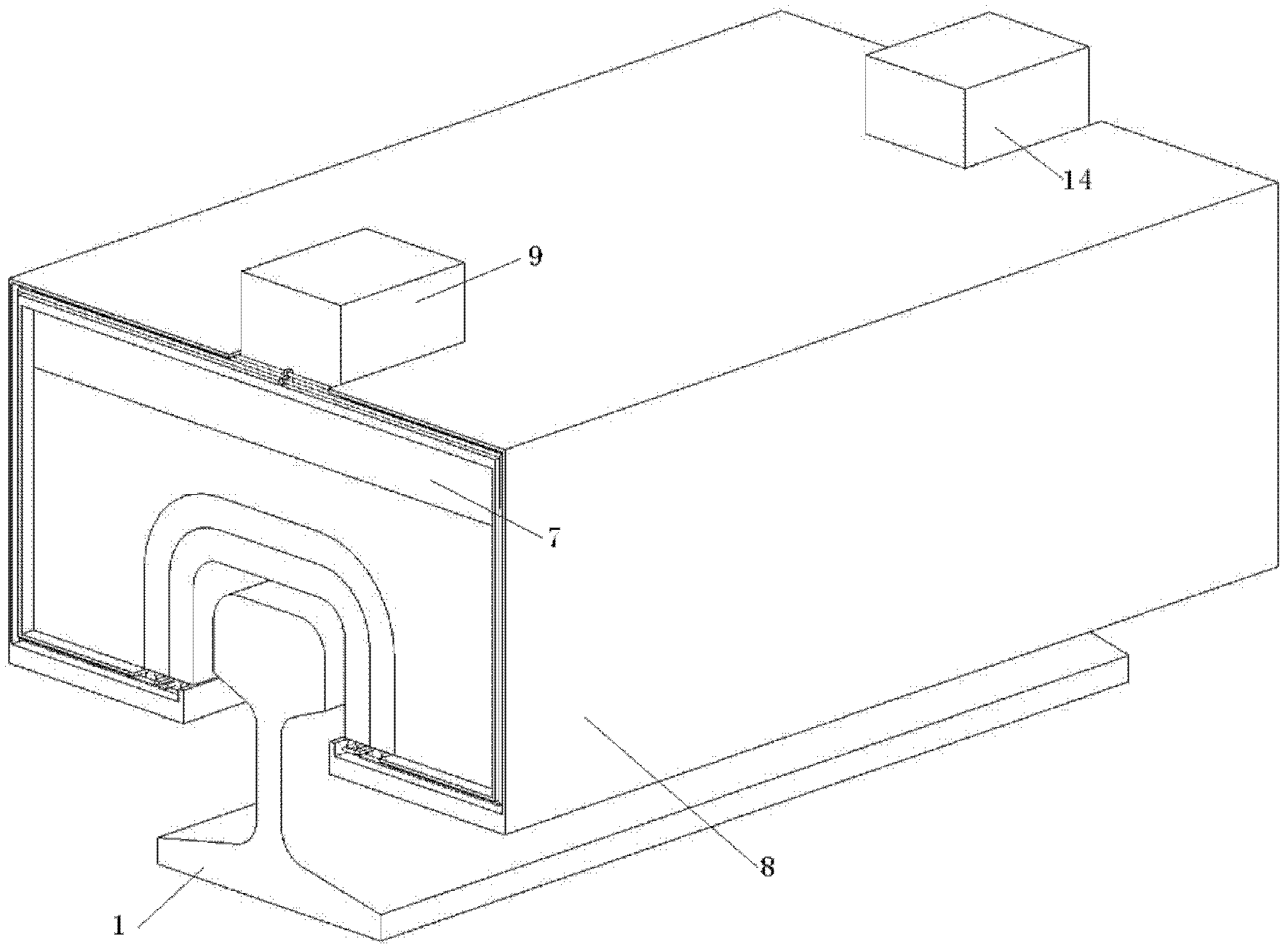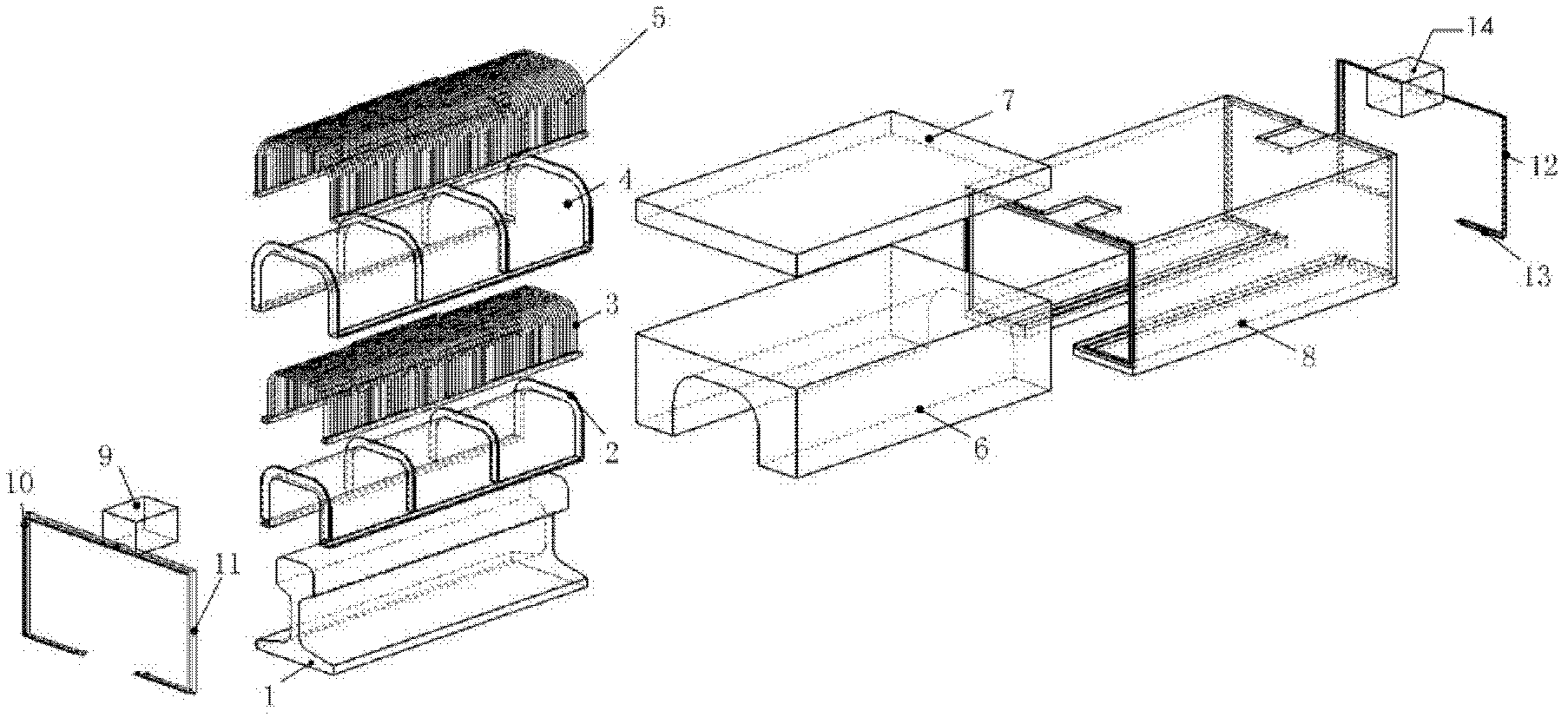Rail destruction detection device and method based on magnetostriction and longitudinal ultrasonic guided wave
An ultrasonic guided wave and magnetostrictive technology, which is applied in the direction of analyzing solids using sound waves/ultrasonic waves/infrasonic waves, can solve the problem of radiation hazards to the human body, cannot meet the needs of large-scale rail damage detection, and equipment cannot move on rails, etc. question
- Summary
- Abstract
- Description
- Claims
- Application Information
AI Technical Summary
Problems solved by technology
Method used
Image
Examples
Embodiment 1
[0057] A rail damage detection device based on magnetostriction and longitudinal ultrasonic guided waves has the advantages of long detection distance, short detection time, real-time detection during online operation of a non-contact rail inspection vehicle, and early crack damage of the rail can be found. Its mechanical parts such as figure 1shown. Its appearance is a cuboid with an open lower end, the shape of the lower end opening is similar to the shape of the rail head, slightly larger than the rail to ensure its non-contact with the rail; the upper part is connected with the rail inspection vehicle. It includes inner layer wire holder 2, inner layer coil 3, outer layer wire holder 4, outer layer coil 5, yoke iron 6, permanent magnet 7, shell 8, current input port 9, electrical inner layer coil current input wire 10, inner Layer coil current output wire 11, outer coil current output wire 12, outer coil current loop wire 13, voltage output port 14, specifically as fig...
PUM
 Login to View More
Login to View More Abstract
Description
Claims
Application Information
 Login to View More
Login to View More - R&D
- Intellectual Property
- Life Sciences
- Materials
- Tech Scout
- Unparalleled Data Quality
- Higher Quality Content
- 60% Fewer Hallucinations
Browse by: Latest US Patents, China's latest patents, Technical Efficacy Thesaurus, Application Domain, Technology Topic, Popular Technical Reports.
© 2025 PatSnap. All rights reserved.Legal|Privacy policy|Modern Slavery Act Transparency Statement|Sitemap|About US| Contact US: help@patsnap.com



